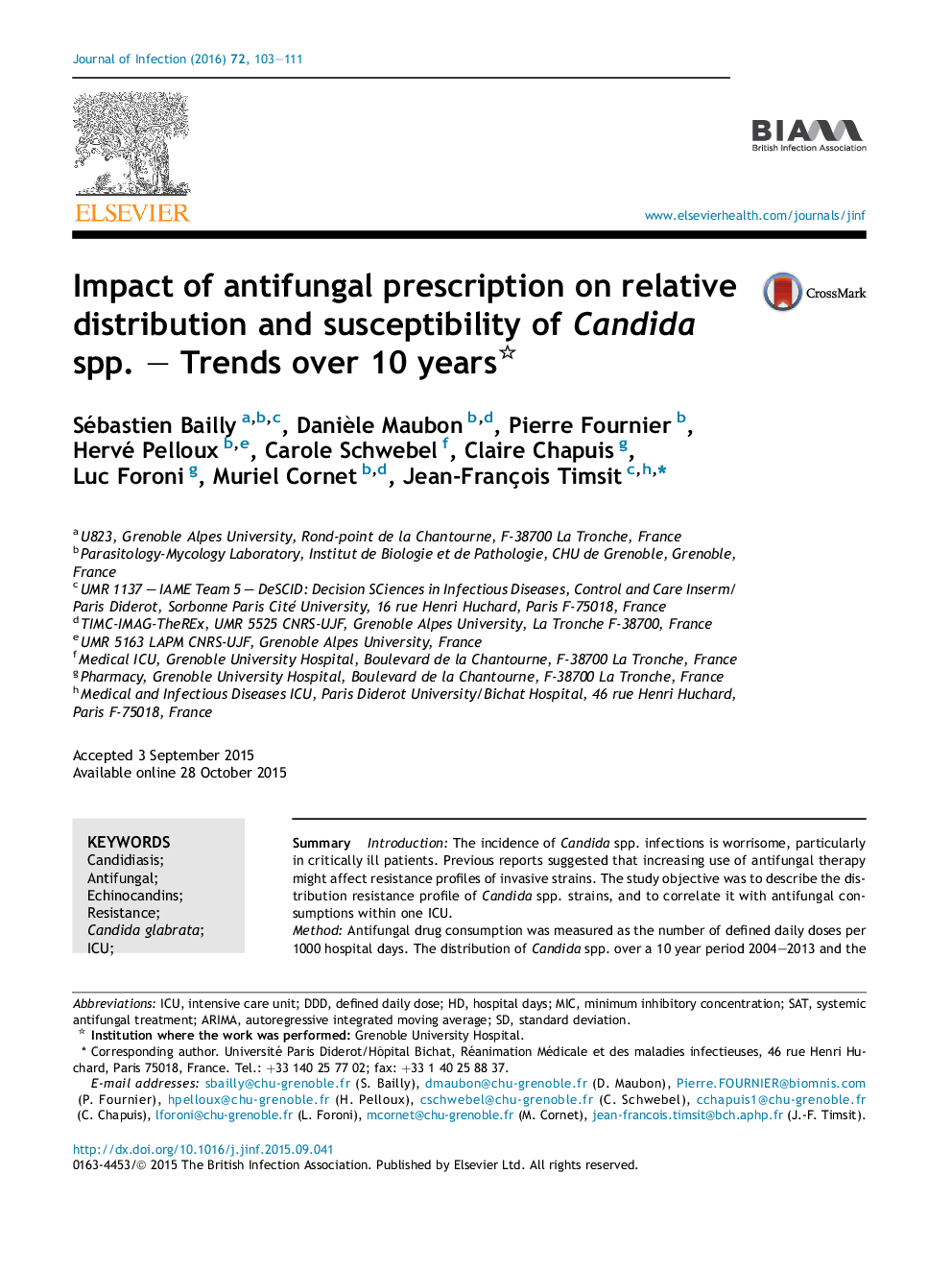| Article ID | Journal | Published Year | Pages | File Type |
|---|---|---|---|---|
| 3374384 | Journal of Infection | 2016 | 9 Pages |
SummaryIntroductionThe incidence of Candida spp. infections is worrisome, particularly in critically ill patients. Previous reports suggested that increasing use of antifungal therapy might affect resistance profiles of invasive strains. The study objective was to describe the distribution resistance profile of Candida spp. strains, and to correlate it with antifungal consumptions within one ICU.MethodAntifungal drug consumption was measured as the number of defined daily doses per 1000 hospital days. The distribution of Candida spp. over a 10 year period 2004–2013 and the MICs of antifungal drugs over 2007–2013 were determined. Time series analyses were performed.ResultsOf 2403 identified Candida spp. from 5360 patients, Candida albicans predominated (53.1%), followed by Candida glabrata (16.2%), Candida parapsilosis (7.9%) and Candida tropicalis (7.5%). C. parapsilosis increased from 5.7% in 2004 to 8.4% in 2013 (P = 0.02). The increase in caspofungin use is correlated with the increase in caspofungin MICs of C. parapsilosis (P = 0.01), C. glabrata (P = 0.001) and C. albicans (P = 0.02). Polyenes consumption correlated with an increase in amphotericin B MICs of C. glabrata (P = 0.04).ConclusionPrevious history of antifungal prescription within an ICU influences Candida species distribution and susceptibility profile to antifungal agents. The significant selective pressure exerted by caspofungin and amphotericin B on C. glabrata is a concern.
